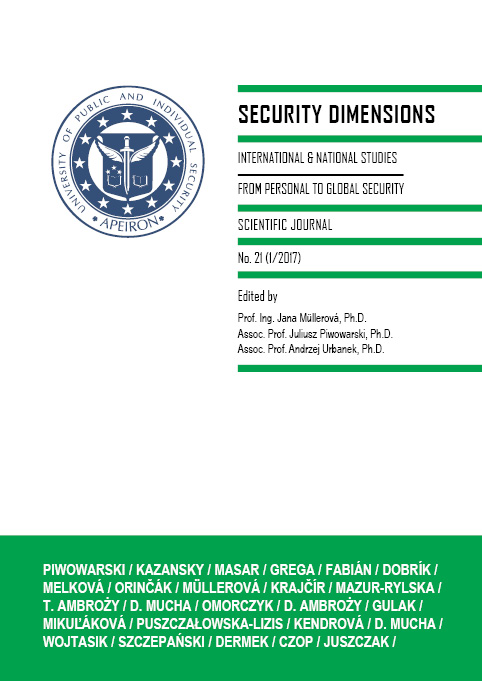Development of Constructive Simulation in Slovak Republic Environment – Transition
from Military to Civilian Sector and Its Acquisition to Science and Practice
Development of Constructive Simulation in Slovak Republic Environment – Transition
from Military to Civilian Sector and Its Acquisition to Science and Practice
Author(s): Rastislav Kazanský, Dušan Masár, Matúš GREGASubject(s): Civil Society, Military history, Military policy, Politics and society
Published by: Wyższa Szkoła Bezpieczeństwa Publicznego i Indywidualnego “Apeiron” w Krakowie
Keywords: constructive simulation; crisis staff; military staff; training; simulation technologies;
Summary/Abstract: The use of simulation in training staffs and personnel (primarily military) had already begun in the seventies of the last century, yet only in developed countries. Slovak Republic, even as non-NATO member (year 2000), has fully implemented standard simulation tools for constructive simulation into staffs’ training environment. Training and preparation of personnel is exactly the area where the possibilities for simulation technologies are (and still going to be) endless. Simulations are the important element able to fully contribute to the formation of skills of crisis managers making non-standard decisions in non-standard situations which are in line with the needs of the most effective protection of lives and property of citizens. The civil sector is looking for ways and possibilities of effective preparation due to changes in the security environment and the consequent necessity for active education of crisis managers. The article discusses the use of simulations and simulation technologies in the process of preparation and training from the military to civilian sector. The quality of training of crisis staff at both individual and collective level determines the real ability of action and the standard of coping with crisis and emergency situations.
Journal: Security Dimensions. International and National Studies
- Issue Year: 2017
- Issue No: 21
- Page Range: 30-43
- Page Count: 14
- Language: English

